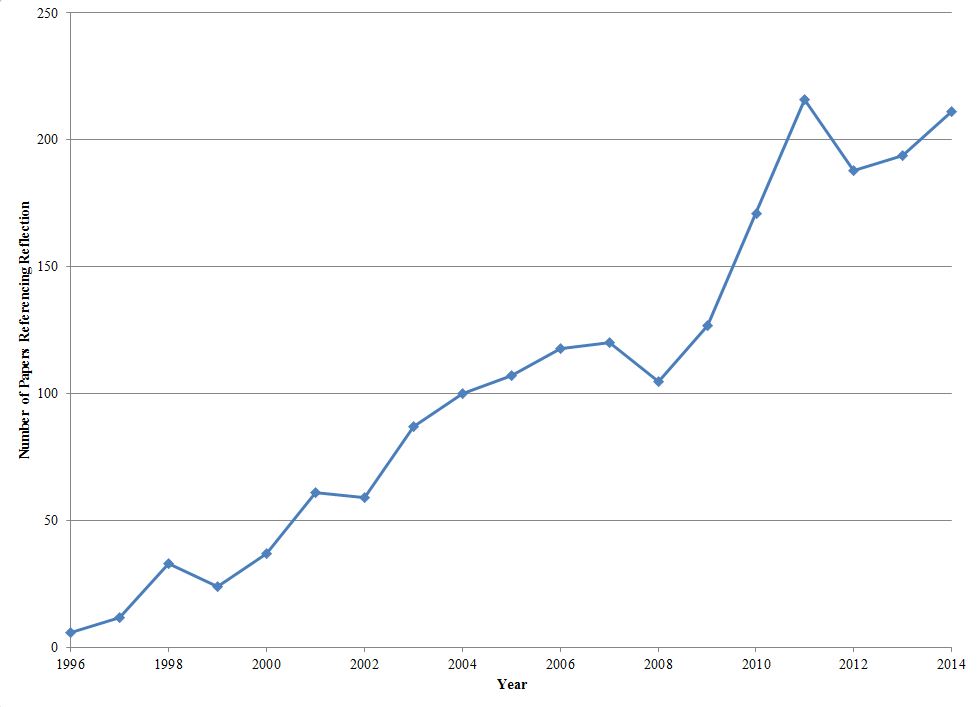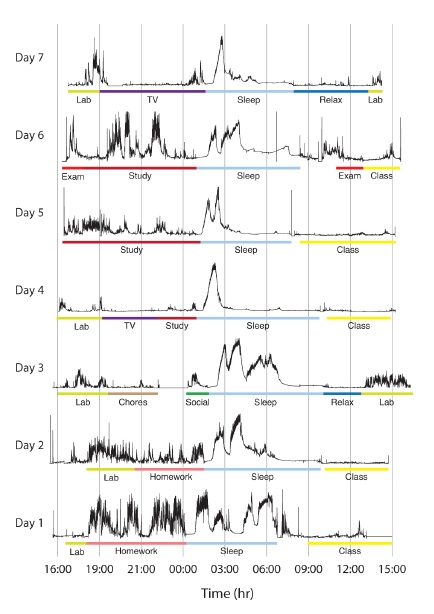Reflection was a cross-cutting thread again at the 2016 ASEE annual conference, as illustrated by the selection of papers below. The first three papers are work done by members of CPREE. As illustrated by the additional papers, there is broad interest in reflection in engineering education.
- Assessing Student Understanding of Reflection in Engineering Education; Dr. Kristine R. Csavina (Arizona State University), Ms. Cherrylynne Rochelle Nethken (Arizona State University), and Dr. Adam R. Carberry (Arizona State University)
- Changing Student Behavior through the Use of Reflective Teaching Practices in an Introduction to Engineering Course at a Two-Year College; Mr. Richard Brown Bankhead III (Highline College), Ms. Tessa Alice Olmstead (Highline College), and Ms. Judy Mannard PE (Highline College)
- Tips & Tricks for Successful Implementation of Reflection Activities in Engineering Education; Dr. Lauren D Thomas (University of Washington), Mania Orand (Human Centered Design and Engineering ), Kathryn Elizabeth Shroyer (University of Washington), Dr. Jennifer A Turns (University of Washington), and Dr. Cynthia J. Atman (University of Washington)
- Accountability in the Flipped Classroom: Student-Generated Pre-Lecture Concept Reflections; Dr. Brittany B. Nelson-Cheeseman (University of St. Thomas) and Kate Laura Steuer (University of St. Thomas)
- Assessing a Scaffolded, Interactive, and Reflective Analysis Framework for Developing Ethical Reasoning in Engineering Students; Dr. Lorraine G. Kisselburgh (Purdue University, West Lafayette), Dr. Justin L. Hess (Purdue University, West Lafayette), Dr. Carla B. Zoltowski (Purdue University, West Lafayette), Dr. Jonathan Beever (University of Central Florida), and Dr. Andrew O. Brightman (Purdue University, West Lafayette (College of Engineering))
- Elementary Teachers’ Reflections on Design Failures and Use of Fail Words after Teaching Engineering for Two Years (Fundamental); Pamela S. Lottero-Perdue Ph.D. (Towson University) and Ms. Elizabeth A. Parry (North Carolina State University)
- Enhancing Student Leadership Competencies through Reflection; Dr. Dianne Grayce Hendricks (University of Washington), Dr. Ken Yasuhara (Center for Engineering Learning & Teaching (CELT)), and Dr. Alyssa Catherine Taylor (University of Washington)
- Impromptu Reflection as a Means for Self-Assessment of Design Thinking Skills; Miss Avneet Hira (Purdue University, West Lafayette) and Dr. Morgan M. Hynes (Purdue University, West Lafayette)
- Personal Learning Environments: Analysis of Learning Processes, Reflection, and Identity in an Academic Context; Miss Judith Virginia Gutierrez (National Autonomous University of Mexico (UNAM)), Dr. Frida Diaz Barriga (National Autonomous University of Mexico (UNAM)), Dr. Nelly Ramirez-Corona (Universidad de las Americas Puebla), Prof. Aurelio Lopez-Malo (Universidad de las Americas Puebla), and Dr. Enrique Palou (Universidad de las Americas Puebla)
- Prediction and Reflection Activities in a Chemical Engineering Course: Fundamentals of Heat and Mass Transfer; Dr. Heather C. S. Chenette (Rose-Hulman Institute of Technology) and Dr. Tony Ribera (Rose-Hulman Institute of Technology)
- Talking “Faculty Development” with Engineering Educators, Then Talking “Engineering Education” with Faculty Developers: A Collaborative Reflection on Working Across Communities; Dr. Alexandra Coso Strong (Franklin W. Olin College of Engineering), Mel Chua (Franklin W. Olin College of Engineering), and Dr. Stephanie Cutler (Pennsylvania State University)
- Mirror Mirror: Reflection and the Building of Mindsets; Prof. Joe Tranquillo (Bucknell University)
- Leading Team Learning: Reflections of a Teaching Assistant; Mr. Brian E Faulkner (University of Illinois, Urbana-Champaign)
- Teaching Software Requirements Inspections to Software Engineering Students through Practical Training and Reflection; Mr. Anurag Goswami (North Dakota State University) and Dr. Gursimran Singh Walia (North Dakota State University)





